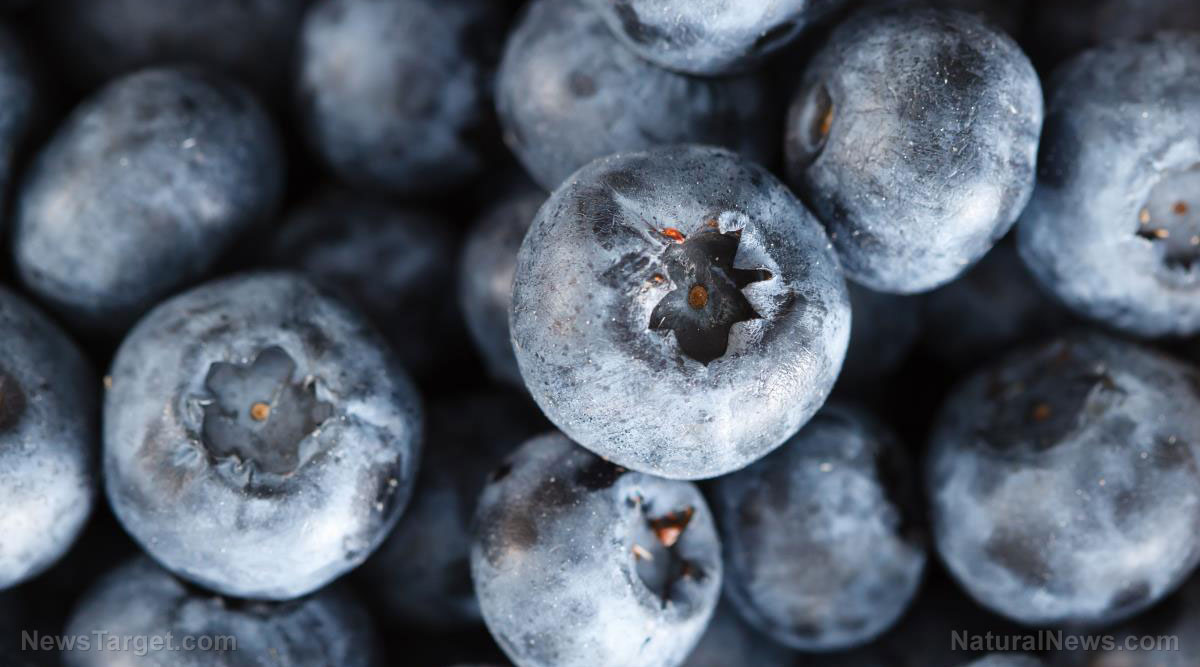Using the highbush blueberry to treat bacterial infections
08/22/2018 // Michelle Simmons // Views
Tags: alternative medicine, anti-inflammatory, antibacterial, bacteria, bacterial infections, Blueberries, blueberry, goodhealth, goodmedicine, highbush blueberry, natural cures, natural healing, natural medicine, natural remedies, Proanthocyanidins, Super foods, superfoods

- For the study, the researchers isolated proanthocyanidins from highbush blueberries.
- Then, they assessed the effects of highbush blueberry proanthocyanidins on the gram-negative bacteria Aggregatibacter actinomycetemcomitans and biofilm formation stained with crystal violet.
- A. actinomycetemcomitans is the key factor in the etiology of localized aggressive periodontitis, the inflammation of the gums and supporting structures of the teeth.
- They also looked at the effects of blueberry proanthocyanidins on the integrity of the oral keratinocyte barrier, leukotoxin activity, and the lipopolysaccharide-mediated inflammatory response of monocytes/macrophages.
- Results showed that highbush blueberry proanthocyanidins decreased the growth of A. actinomycetemcomitans and inhibited biofilm formation.
- Highbush blueberry proanthocyanidins also exhibited antibacterial activities as they impaired the bacterial cell membrane.
- Moreover, the proanthocyanidins protected macrophages from leukotoxin's negative effects and secretion of pro-inflammatory cytokines.
- In addition, the proanthocyanidins prevented the activation of the NF-KB signaling pathway.
- These findings suggested that highbush blueberry proanthocyanidins possess antibacterial and anti-inflammatory activities.
In conclusion, highbush blueberry proanthocyanidins can potentially be used as natural therapeutic agents for treating infections.
Read the full text of the study at this link.
To read more stories on the health benefits of blueberries, visit Blueberries.news today.
Journal Reference:
Lagha AB, LeBel G, Grenier D. DUAL ACTION OF HIGHBUSH BLUEBERRY PROANTHOCYANIDINS ON AGGREGATIBACTER ACTINOMYCETEMCOMITANS AND THE HOST INFLAMMATORY RESPONSE. BMC Complementary and Alternative Medicine. 10 January 2018; 18(10). DOI: 10.1186/s12906-017-2072-x
Related Topics
alternative medicine anti-inflammatory antibacterial bacteria bacterial infections Blueberries blueberry goodhealth goodmedicine highbush blueberry natural cures natural healing natural medicine natural remedies Proanthocyanidins Super foods superfoodsLatest News
Related News
11/21/2023 / By Arsenio Toledo
11/21/2023 / By Evangelyn Rodriguez
11/21/2023 / By Zoey Sky
11/20/2023 / By Arsenio Toledo
11/17/2023 / By Zoey Sky
11/15/2023 / By Kevin Hughes
Take Action:
Support Natural News by linking to this article from your website.
Permalink to this article:
Copy
Embed article link:
Copy
Reprinting this article:
Non-commercial use is permitted with credit to NaturalNews.com (including a clickable link).
Please contact us for more information.
Please contact us for more information.






















